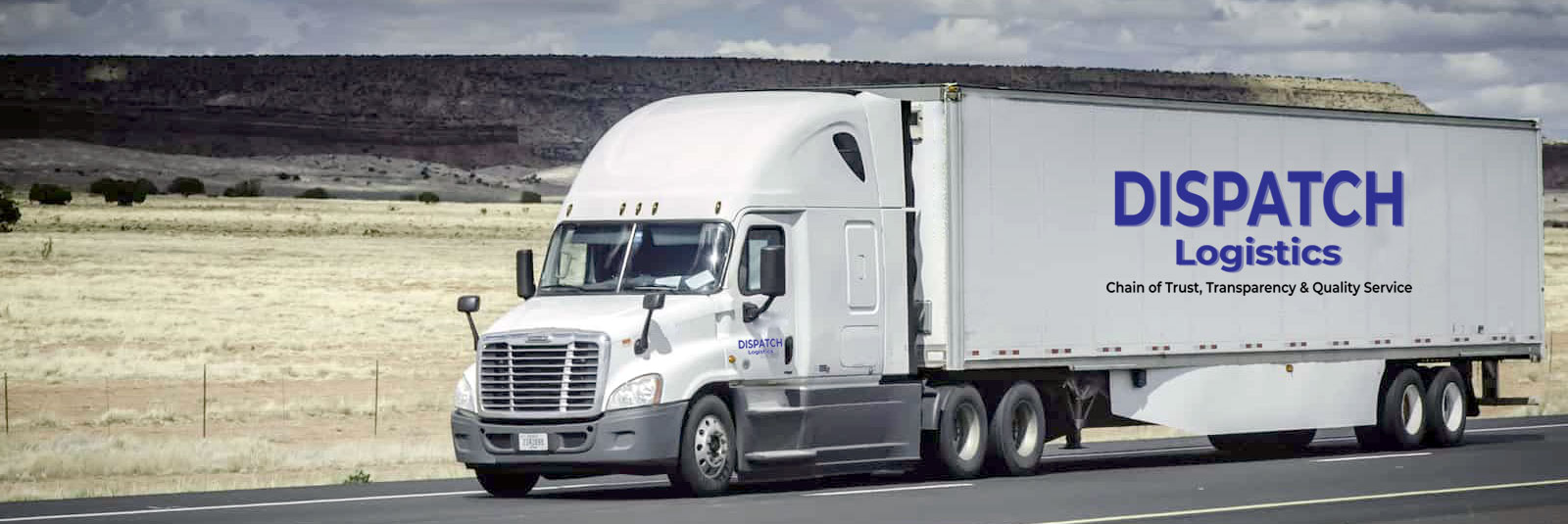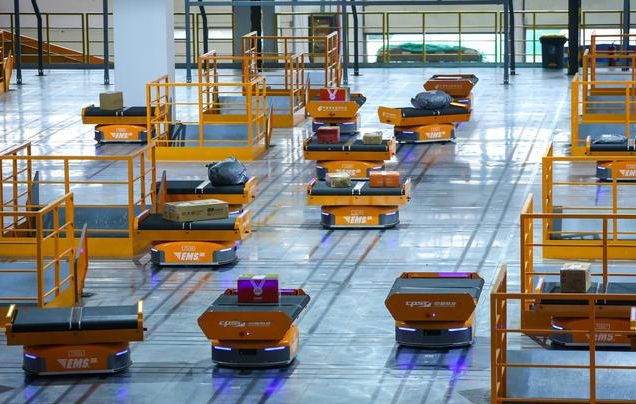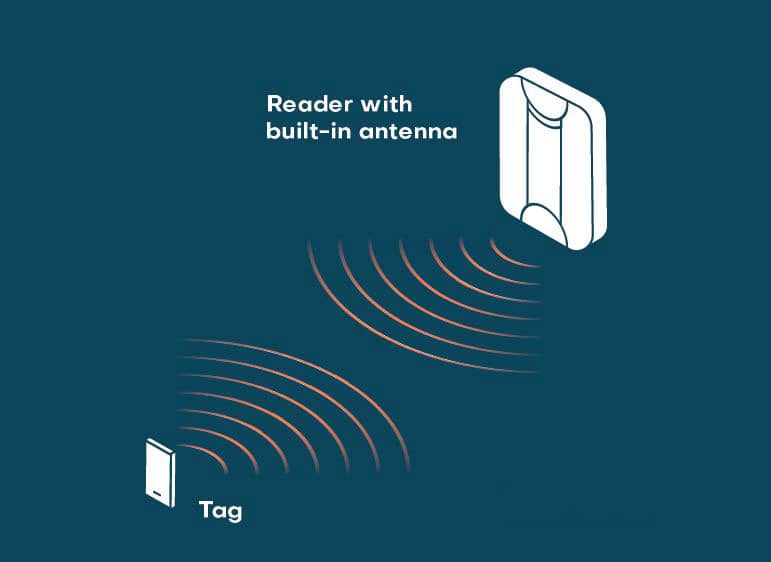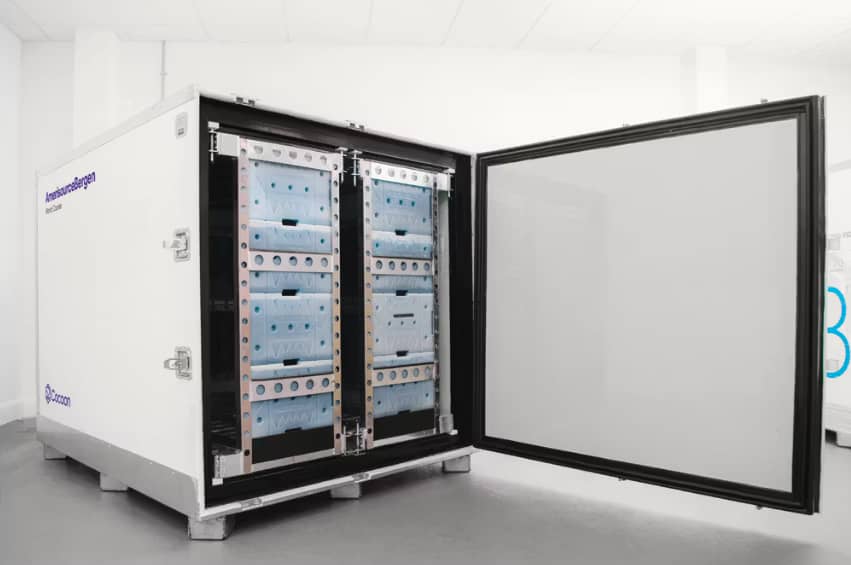 Call at :
+86 18681515767
Call at :
+86 18681515767
 Email :
marketing@jtspeedwork.com
Email :
marketing@jtspeedwork.com
 Call at :
+86 18681515767
Call at :
+86 18681515767
 Email :
marketing@jtspeedwork.com
Email :
marketing@jtspeedwork.com

As urban logistics accelerates, new energy vehicles are becoming increasingly common across delivery scenarios. They are quieter, more economical, and better aligned with today’s environmental goals. Yet as fleets grow, the challenge shifts toward efficiency: how to assign the right vehicle to the right task, with the right battery status, at the right moment. Many logistics operators have encountered issues such as incorrect routing or poorly timed dispatching, which ultimately slow down the entire supply chain. Traditional dispatching depends heavily on manual registration and GPS tracking. But manual work is prone to errors, and GPS signals are often unstable near warehouses or parking structures. As fleets expand, these small inefficiencies accumulate into operational delays. This is why many companies have turned to RFID— not because it is flashy, but because it provides exactly what the logistics industry values most: stable, accurate, and automated data collection. To improve identification accuracy, operators deploy UHF RFID antennas, 3dBi RFID antennas, and sometimes UHF gate readers at vehicle entrances, loading bays, and battery-swap areas. These devices automatically read vehicle tags as they pass through, without requiring the vehicle to stop or the operator to scan manually. Dispatch centers receive real-time entry and exit updates, allowing them to track fleet movement with far greater clarity. What once required repeated phone calls or manual confirmation is now completed within seconds. Battery management remains the most crucial component of operating new energy vehicles. It directly affects range, availability, and safety. In the past, issues such as battery mixing or unclear health records were common. By tagging each battery and pairing the data with a UHF RFID module embedded inside swap stations, operators can accurately track battery cycles, health conditions, and usage history. Some stations also use directional readers to prevent cross-reads when multiple vehicles enter the zone at the same time, ensuring a clean and reliable swap process. RFID is not designed to trace continuous vehicle movement, but it excels at logging “key operational nodes.” Every time a vehicle passes a loading gate, charging point, or checkpoint, the system updates the timeline automatically. In outdoor yards or long-distance lanes, long-range modules extend the reading zone so the dispatch platform can detect vehicle arrival earlier and respond more quickly. This early sensing is especially helpful for high-turnover distribution hubs. These node-based records make dispatching far more structured. Dispatchers gain access to real usage metrics: idle mileage, operational bottlenecks, route efficiency, and regional workload peaks. Decisions that once relied purely on experience are now supported by measurable data. Fleet utilization improves, unnecessary trips are minimized, and the operational value of new energy vehicles becomes more fully realized...
As workplace models continue to evolve, more companies are realizing that improving efficiency is not only about tightening workflows. It also involves making better use of space, managing shared devices, and ensuring transparent access to information. In many offices, conflicts over meeting rooms, misplaced equipment, and time-consuming manual checks have long been seen as unavoidable. Employees lose time searching for available rooms or shared devices, while administrative teams struggle with tracking and documentation. To solve these persistent problems, companies need a technology that works quietly in the background—automated, reliable, and capable of linking different systems. That is why RFID has become a key part of modern smart office scenarios. 1. Common Pain Points in Traditional Offices Among all office resources, meeting rooms are often the biggest source of frustration. People book rooms but do not show up; others occupy a room without a reservation; and even with scheduling platforms, the actual usage often differs from what is displayed. Asset management brings its own difficulties. Laptops, projectors, tablets, testing tools, samples—even toner and paper—need to be logged and tracked. Who borrowed what, whether it has been returned, and where the item currently is are details that usually rely on manual records, which are slow and easily inaccurate. Routine inspections are another underestimated cost. Checking meeting rooms, storage spaces, and equipment lockers takes time and often provides outdated information. As a company grows, the inefficiencies become more pronounced. RFID provides a practical way to make these issues manageable. 2. Making Meeting Rooms Truly “Smart” with RFID Installing RFID readers at meeting room entrances and embedding RFID chips in employee badges may sound simple, but together they reshape how meeting rooms are managed. In many setups, companies use a directional RFID reader at the door to precisely identify who is entering or leaving, reducing false detections and ensuring accurate check-in data. When an employee walks into a room, the system automatically recognizes the badge and confirms whether the person is part of the reservation. There is no scanning or tapping required—the check-in process happens automatically. If a meeting ends early, the system releases the room based on real exit activity; and if no one shows up after the reservation starts, the room turns available again. This significantly reduces empty reservations and double-booking, while giving everyone a real-time view of room availability. The data can also trigger lighting and HVAC. When a meeting begins, lights and air-conditioning turn on automatically; when people leave, everything shuts off—saving energy effortlessly. Much of this automation is enabled by compact hardware built around a UHF RFID module, which allows fast tag recognition and stable performance even in high-traffic office environments. 3. Asset Tracking Without...

In recent years, many companies have been talking about “unmanned warehouses,” yet very few have genuinely achieved it. Even in highly automated facilities, essential tasks such as scanning, confirming, and dispatching still rely heavily on people. To create a warehouse that can operate without manual intervention from inbound to outbound, equipment must be able to recognize materials, understand tasks, and execute actions autonomously—not merely repeat mechanical routines. The integration of RFID and AGV technologies is becoming a key driver of this transformation. In conventional warehouse operations, barcodes and QR codes are widely used for identification. However, both require manual alignment and manual triggering. Whether it's scanning inbound pallets or validating inventory, a human operator must hold the scanner, aim the laser, and confirm the result. Once human involvement is required, mis-scans and missed scans are inevitable. At the same time, AGVs can navigate and move goods automatically, but they don’t actually know what they are carrying. They simply follow programmed routes and tasks. Without material-level awareness, AGVs remain “automatic” but not “intelligent.” RFID changes the entire foundation. It gives every material an “electronic identity.” Unlike barcodes, RFID does not require line-of-sight, nor does it require someone to hold a scanner. Dust, packaging, or angle does not affect reading performance. As an AGV passes by, the onboard RFID reader automatically identifies the pallet or container: material ID, batch number, quantity, or even the current task status. As long as goods enter the warehouse, they become traceable digital entities—allowing AGVs to operate with context, not blindly. When storage locations are also equipped with RFID tags, accuracy improves even further. As an AGV approaches a shelf, it reads the location tag and checks it against the assigned destination. If the data doesn’t match, the AGV will not proceed with shelving. This eliminates the long-standing problems of wrong-putaway and wrong-pick, which are common in barcode-based warehouses. Material handling no longer depends on operators’ judgment. Instead, verification becomes automated and systematic—a crucial requirement for stable, unmanned warehouse operations. Beyond identifying goods and locations, RFID allows warehouses to shift from manual task triggering to event-driven task automation. For example, when inbound goods arrive in the receiving area, RFID gates automatically detect the items and update their status to “awaiting putaway.” The system immediately generates a task for an AGV, which proceeds to pick up the pallet without waiting for human dispatch. Similarly, when a production line is running low on materials, the shelf’s RFID tag reflects the reduced quantity. The system instantly triggers a replenishment task. AGVs respond in real time, without human supervision or instructions. This state-driven automation is a defining featu...

As digital transformation accelerates across the construction industry, the management of tool and equipment rentals is entering a new stage of modernization. Traditional practices that rely heavily on manual registration and paper-based records often lead to chaotic tool usage, frequent asset losses, inconsistent maintenance schedules, and inefficient workflows. In large-scale construction projects with long timelines, dispersed personnel, and frequent movement of tools, conventional methods are no longer capable of supporting fine-grained management. RFID (Radio Frequency Identification) technology, powered by increasingly compact and industrial-grade devices such as UHF RFID modules, is becoming a core driver of intelligent tool rental management. It enables transparent equipment sharing, precise location tracking, and full lifecycle visibility across the jobsite. In traditional workflows, tools such as wrenches, measuring instruments, drills, and other frequently used or high-value devices circulate constantly within and beyond the jobsite. They are easily misplaced, mixed between teams, or inadvertently taken offsite. Manual documentation is time-consuming and prone to human error, which complicates responsibility tracing and disrupts cost allocation. The lack of reliable data also prevents managers from understanding true utilization rates, resulting in redundant purchases of tools that may already exist but cannot be located. Meanwhile, many power tools and precision instruments require periodic calibration or preventive maintenance, yet paper-based logs rarely maintain accuracy, creating potential safety risks. These challenges highlight the need for an automated, traceable asset management solution—precisely the gap that RFID fills. In an RFID-enabled rental management system, tags are attached or embedded across various equipment categories. Rugged anti-metal tags support heavy-duty tools, while miniature designs serve precision items. Readers are deployed at warehouse gates, jobsite entry points, intelligent tool cabinets, and even on vehicles. In high-traffic zones, companies increasingly use UHF gate readers to automatically detect tools passing through access points, ensuring every borrowing and return action is captured instantly. When workers retrieve tools from a smart cabinet, the system identifies their identity, the type of tools taken, and uploads the data to the platform. Handheld readers further accelerate inventory checks, allowing staff to scan hundreds of tools within seconds. RFID is also highly effective for loss prevention. When high-value tools exit through a monitored access point without proper authorization, the system triggers an alert. To further strengthen accuracy, some companies deploy directional RFID readers, which identify not only whether a tool passed a checkpoint but also its movement direction—entering or exiting—reducing false alarms and improving real-time visibility. After adopting these systems, ma...

As global awareness of sustainable development continues to grow, environmental protection and resource recycling have become crucial to urban management and industrial transformation. However, traditional waste management systems still face challenges such as poor information transparency, inaccurate classification, limited traceability, and low recycling efficiency. With the advancement of the Internet of Things (IoT) and Radio Frequency Identification (RFID) technologies, waste treatment and resource recovery are entering a new stage of digitalization. Because of its advantages in non-contact identification, rapid data collection, and full traceability, RFID has become an important driver of modern environmental management. How RFID Supports Environmental Management RFID is a wireless technology that enables automatic identification and data transfer. It consists of electronic tags, readers, and a data management platform. When an object with an RFID tag enters the range of a reader, the system automatically retrieves its identity and records relevant data without human contact. In waste management and recycling, RFID offers several distinct benefits. Each waste bin, container, or garbage bag can carry a unique RFID tag, allowing precise identification and classification. The entire process—from waste generation and collection to transportation and treatment—can be tracked in real time, ensuring transparency and compliance. Systems equipped with UHF RFID antennas and UHF RFID modules can connect to collection trucks, weighing devices, and cloud-based platforms, automating data capture and improving operational efficiency. The information gathered provides valuable insights for optimizing collection routes, improving classification accuracy, and supporting data-driven policy decisions. Real-World Applications of RFID in Waste and Recycling In smart cities, RFID has become a key tool for managing waste classification. Each garbage bin or bag is labeled with an RFID chip, while residents use smart cards or mobile apps to log their disposal. Collection vehicles fitted with directional RFID readers can automatically detect tagged bins, record collection times, and upload data to a central system. In several pilot programs in China, this system is combined with a point-based reward scheme—residents earn points for proper waste sorting, which can be exchanged for household goods or community services. This approach not only motivates participation but also provides measurable data for government oversight. Industrial waste management is another important application. Many factories produce hazardous waste that must be carefully monitored. RFID tags attached to waste containers enable real-time tracking of materials from generation to disposal. In chemical industrial zones, RFID systems equipped with UHF RFID antennas and GPS modules monitor each step of transportation. Any deviation from authorized routes or unauthorized unloading triggers an alert, ...

In today’s globalized supply chain, ensuring the safety and integrity of food and pharmaceutical products during transportation and storage has become increasingly complex. Cold chain logistics—responsible for maintaining low temperatures throughout the supply process—plays a crucial role in preserving product quality and consumer safety. However, temperature fluctuations, data inaccuracies, and manual tracking limitations continue to pose serious challenges. Radio Frequency Identification (RFID) technology is emerging as a transformative solution that enhances the transparency, efficiency, and compliance of cold chain management. By enabling real-time tracking and automated data capture, RFID systems ensure that every link in the supply chain—from manufacturing to delivery—operates within strict temperature and regulatory standards. 1. The Importance of Cold Chain Transparency Food and pharmaceutical products are highly sensitive to temperature variations. Even brief exposure to inappropriate conditions can result in spoilage, reduced potency, or safety risks. For instance, vaccines must often be kept between 2°C and 8°C, while frozen foods require stable sub-zero storage. Traditional barcode or manual record systems struggle to maintain continuous monitoring and offer limited traceability when anomalies occur. In contrast, RFID technology provides a digital backbone for transparent cold chain operations, allowing stakeholders to verify temperature compliance, location, and handling history in real time. 2. How RFID Technology Works in Cold Chain Logistics An RFID system typically consists of tags, readers, and middleware. RFID Tags: These are attached to pallets, containers, or individual products. In cold chain applications, tags often integrate temperature sensors that record environmental conditions at defined intervals. RFID Readers: Installed in warehouses, vehicles, or checkpoints, these devices automatically capture tag data without line-of-sight scanning. Middleware and Cloud Platforms: Data collected from readers are transmitted to cloud systems, where it can be analyzed, visualized, and shared across the supply chain. By combining Ultra High Frequency (UHF) RFID and sensor-based tags, companies can achieve continuous monitoring of temperature, humidity, and location. This allows immediate alerts when conditions deviate from acceptable ranges—helping logistics operators intervene before products are compromised. 3. Enhancing Regulatory Compliance and Risk Management Regulatory bodies worldwide, such as the FDA and WHO, have strict requirements for temperature-controlled logistics. RFID-based cold chain monitoring helps enterprises meet these regulations by maintaining digital records automatically. Unlike manual temperature logs, RFID data is time-stamped, tamper-resistant, and can be archived for years—ensuring full audit traceability. When deviations occur, the system can generate automatic compliance reports, enabling quick root-cau...

With the rise of nationwide fitness initiatives, the intelligent upgrading of sports venues has become an essential part of urban digital transformation. Traditional venue operations often rely on manual registration, paper tickets, and human inspection — approaches that are inefficient, error-prone, and unable to meet users’ growing expectations for convenience, transparency, and efficiency. RFID (Radio Frequency Identification) technology has emerged as a new tool driving digital transformation. From intelligent booking systems to equipment asset management and enhanced user experiences, RFID is becoming a core enabler in the construction of smart sports venues. Among the various RFID technologies, UHF RFID sport tags, UHF gate readers, and UHF RFID modules play particularly critical roles in enabling real-time data collection, identification, and automation. I. Overview of RFID Technology: The Core Engine of Smart Venues RFID is a wireless automatic identification technology that detects and retrieves data from tagged objects using radio waves. A typical RFID system consists of tags, readers, and a backend management platform. Compared with barcodes or QR codes, RFID offers significant advantages such as non-contact identification, long-range reading, batch processing, reusability, and resistance to harsh environments. In sports venues, RFID applications go far beyond simple access control. Thanks to its real-time data capture and fast reading capabilities, RFID seamlessly connects venues, equipment, users, and data, enabling a fully digitalized management process — from booking and entry to usage tracking and maintenance. Modern systems often integrate UHF RFID modules in access control and data servers to ensure stable long-distance communication and high-speed data transfer between devices and cloud systems. II. Intelligent Booking Systems: From Manual Registration to Seamless Access Traditional booking systems often rely on manual phone calls or mobile app inputs, which can lead to duplicate reservations and scheduling conflicts. With RFID, venues can implement automated identity verification and real-time booking confirmation. Membership Identification and Access Control When users register as members, their profiles can be linked to UHF RFID sport tags embedded in cards or wearable wristbands. Upon arrival, they simply scan their wristband or card to verify identity and confirm their booking details — no staff verification needed. Smart Gate Access with UHF Gate Readers UHF gate readers installed at entry points automatically verify the member’s reservation details, time, and access level. If mismatched, the system denies entry and displays an alert — effectively preventing unauthorized access or ticket reselling. The combination of UHF gate readers and sport tags provides a smooth, contactless, and secure entry process. Dynamic Scheduling and Resource Optimization Venue operators can monitor facility usage in real time. If a user cancel...

In the chemical industry, safety is always the top priority. Most raw materials, catalysts, and intermediates in chemical plants are flammable, explosive, corrosive, or toxic. Therefore, managing the storage of hazardous materials is a critical part of ensuring production safety. However, traditional warehouse management still relies heavily on manual records, paper labels, and barcode scanning. These methods are inefficient, prone to human error, and often lack real-time visibility. With the rapid advancement of the Internet of Things (IoT) and automatic identification technologies, RFID (Radio Frequency Identification) has emerged as a key enabler for achieving intelligent and controllable safety management in chemical plants. 1. Safety Challenges in Chemical Warehousing Unlike ordinary logistics warehouses, chemical warehouses store large quantities of dangerous substances under strict requirements for temperature, ventilation, and explosion protection. Common safety issues include: Lack of real-time visibility – Information on the inbound, outbound, and inventory status of hazardous materials is often updated manually, resulting in delays. Poor traceability – Once a leakage, overheating, or chemical reaction occurs, it’s difficult to trace the source and responsibility. High operational risks – Workers need to approach hazardous areas to scan barcodes or verify labels, increasing exposure risk. Regulatory compliance pressure – Government regulations on the storage and transportation of dangerous goods demand real-time monitoring and digital records, which manual systems cannot meet. The root cause of these problems lies in information silos and lack of process visibility. To achieve full lifecycle control of hazardous materials, chemical enterprises must rely on automation and data-driven management. 2. The Role and Advantages of RFID Technology RFID uses electromagnetic waves to identify and track tagged objects wirelessly. Through a combination of tags, readers, and backend systems, RFID enables automatic data capture and transmission. Compared with traditional barcode technology, RFID offers several advantages in chemical warehouse environments: Non-contact identification – Tags can be read remotely without manual scanning, reducing human exposure. Bulk reading capability – Hundreds of tags can be read simultaneously, significantly improving inventory efficiency. Environmental resistance – RFID tags can be sealed for high temperature, humidity, or corrosive environments, and even made explosion-proof. Real-time data updates – When integrated with IoT platforms, RFID allows continuous monitoring of storage conditions such as temperature and humidity. Anti-tampering and traceability – Each RFID tag carries a unique ID, ensuring full traceability from production to usage. By implementing RFID with an industrial-grade UHF RFID module, chemical plants can achieve three-dimensional control over personnel, materials, and environment, shifting fro...
Categories
New Products
JT-6210 0-1m UHF RFID Desktop USB Reader Writer ISO18000-6C Read More
JT-7100 0-3m 860-960MHz UHF RFID Industrial Grade RFID Reader Read More
JT-8380 0-6m UHF RFID 860-960MHz Middle Range Integrated Reader Read More
JT-P983 Industrial Tablet Pad RFID Handheld Reader Grade Long Range Android UHF Terminal Bluetooth RFID Reader For Warehouse Read More
JT-1550 Small Mini HF RFID 13.56MHz Module ISO14443A ISO 15693 Protocol Read More
JT-2302A 13.56MHz RFID Module ISO14443A ISO15693 Protocol Read More
JT-2302 HF RFID 13.56MHz Module ISO14443A ISO15693 Support Mifare1 IC card Read More
JT-2540 TM200 UHF RFID 4-port Module 860-960MHz TTL Read More
Copyright © 2025 Shenzhen Jietong Technology Co.,Ltd. All Rights Reserved.

IPv6 network supported